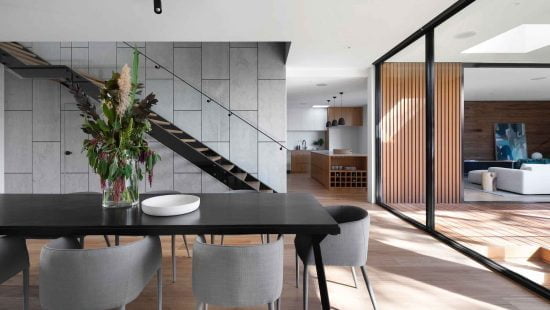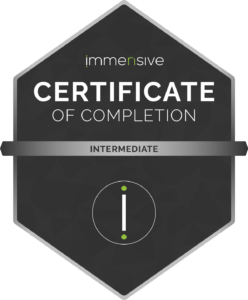3ds Max & V-Ray – Rendering
Coming Soon
Learn to create highly realistic renders
Duration: 24 hours
Frequency: 4 hours per week (mandatory)
Course Overview
Creating high-quality renders is an art. Despite the rise of Real-Time rendering engines in the market, static or offline rendering still represents a higher standard of quality in project and product representation. The
course provides a full immersion into the world of static rendering primarily with Vray. Vray is the most widely used Biased rendering engine in the world and is practically supported by almost all modeling software. Participants will have the opportunity to learn in detail the most advanced techniques for static rendering to achieve a high degree of realism.


Frequency
4 hours per week (mandatory)

Skill Level
Intermediate

Software
3ds Max + Vray

Prerequisites
None

Included Service
Tutoring, Slides

Final Assessment
Yes

Qualification
Certificate

Duration
24 Hours

Frequency
4 hours per week (mandatory)

Skill Level
Intermediate

Software
3ds Max + Vray

Prerequisites
None

Included Service
Tutoring, Slides

Final Assessment
Yes

Qualification
Certificate

Duration
24 Hours

Frequency
4 hours per week (mandatory)

Skill Level
Intermediate

Software
3ds Max + Vray

Prerequisites
None

Included Service
Class, Notebook, Tutoring, Slides

Final Assessment
Yes

Qualification
Certificate

Duration
24 Hours

Location
Aversa

Frequency
4 hours per week (mandatory)

Skill Level
Intermediate

Software
3ds Max + Vray

Prerequisites
None

Included Service
Class, Notebook, Tutoring, Slides

Final Assessment
Yes

Qualification
Certificate

Duration
24 Hours

Location
Aversa

Educational Objectives
Empower learners to create high-quality photorealistic renders through static rendering with Vray. Basic concepts of material shading and rendering will be covered. The Vray rendering engine will be shown in detail, and lighting techniques for an architectural scene will be demonstrated. The course focuses on materials and lighting for an already provided scene. The lab's output package will consist of highly photorealistic static renders.
Program
- 3ds Max Material Editor
- Multi-Sub Material and Material ID assignment
- Setting up Vray as the Rendering Engine
- Interactive Progressive Render
- Introduction to PBR
- Creating common materials with VrayMtl (dielectrics, metals, glass, fabrics), translucent materials (Vray2sided), illuminating materials (Vraylight)
- Texturing in 3ds Max
- What textures are, common types, and how they are interpreted
- UV Mapping in 3ds Max
- UV Mapping in 3ds Max (simple projections and gizmo projection control)
- VRayTriplanarTex
- Vray Displacement Modifier
- Fur Modifier
- Creating visually believable materials (practice)
- Main components of Vray for lighting a scene:
- Vray Lights: types of lights and main settings, relationship between measurement units and light source/ shadow dimensions
- Vray Sun System
- IBL: what it is and how to set it up in Vray
- Vray Physical Camera: controlling exposure, auto exposure, auto white balance, Depth of Field, Clipping
- Illuminating a scene in real-time:
- Vray Frame Buffer (controlling the image from VFB, layers, saving an image)
- Using two viewports simultaneously (locking the camera in one viewport and working with lights in another)
- Focusing solely on scene lighting without being distracted by materials (global switch/IPR debug)
- Lighting Practice:
- Interior Rendering: natural lighting with a single light source, mix (example ready)
- Interior Rendering: creating a hierarchy of artificial lights
- Render settings
- Vray Denoiser
- Render elements (Vray MtlID, Vray AO, Vray Reflection/Refraction, Vray GI)
- Final touches:
- Combining render elements
- Minor adjustments using VrayWireColor
- Changing the background (sky), what to do in Vray before rendering the final image
- LUTS


Delivery Methods
The course can be taken in person and online with the following methods
In-Person Courses
- The course will have a maximum of 6 participants for greater interaction between the instructor and the student
- Classroom lessons take place at the Immensive headquarters in Aversa near the Department of Architecture.
- During classroom lessons, participants can receive immediate feedback thanks to the constant tutoring of the teacher.
- Participants will be provided with:
- Notebook (Windows)
- Course-related software for practical exercises
- Participants will have the opportunity to use the tools and equipment available to test the latest VR technologies.
Online Courses
- Online lessons are conducted through the e-learning platform
- Lessons are held synchronously for effective interaction between instructors and students
- Participants must have:
- Computer (Windows or Mac)
- Internet connection
- Headphones/speakers
- Microphone
- Webcam (preferred but optional)
- For software application courses, it is preferable that the course software be installed for practical exercises.
Calendar
Currently, there are no dates available for this course. Fill out the form for more information and to be contacted when the course is available.
How to Enroll
To participate in Immensive Academy courses, the first step is to register on the platform. Subsequently, you can pre-enroll in the desired course (registration is free and non-binding). Once the course is confirmed, you can proceed with payment and access the lesson.

Register on the platform

Pre-enroll in the course al corso

Wait for course confirmation

Make the payment

Start the online or in-person lesson

1. Registrati alla piattaforma

2. Pre-iscriviti al corso

3. Attendi conferma confirmation

4. Effettua il payment

5. Avvio lezione or in-person lesson
Course Tutors
Our tutors are also professionals working in the integrated virtual reality and augmented reality solutions industry in various fields.
FEDERICO CIOFFITutors
A psychology graduate, he earned a postgraduate master's degree in "Human-Centered" Virtual Reality in 2017. He continues to train in 3D graphics and Immersive Virtual Reality, working with qualified companies in the field. Collaborates with the University of Campania on real/virtual hybrid environment development in multisensory perception research projects.
Expert in
Level Designing
Modellazione 3D
Prices
The most cost-effective way to learn from industry professionals, in a fun and collaborative environment, receiving personalized feedback from teachers and tutors.
In-Person
€1440 IVA incl.-
Professional Training
-
Tutoring
-
Cloud-based materials and resources
-
Virtual Reality Lab Where you can test the latest VR technologies
In-Person
€719 IVA incl.-
Professional Training
-
Tutoring
-
Cloud-based materials and resources
-
Virtual Reality Lab Where you can test the latest VR technologies
Reserved for Students
Online €770
€499 IVA incl.-
Professional Training
-
Tutoring
-
Cloud-based materials and resources
-
Synchronous Distance Learning
Launch Price Fino a Settembre 2024
PREZZO LANCIO
Valido solo per i corsi di settembre 2024. Da ottobre il prezzo del corso sarà: €770
Frequently Asked Questions
A: Yes, once, with a one-month gap.
A: In-person: No. Each student will be assigned a computer for use during lessons and lab work.
Online: Yes, each student must have a computer.
Online: Yes, each student must have a computer.
A: No, in-person courses are conducted exclusively in-person.
A: No. The course exclusively covers the pipeline of static rendering starting from a provided 3D model.







